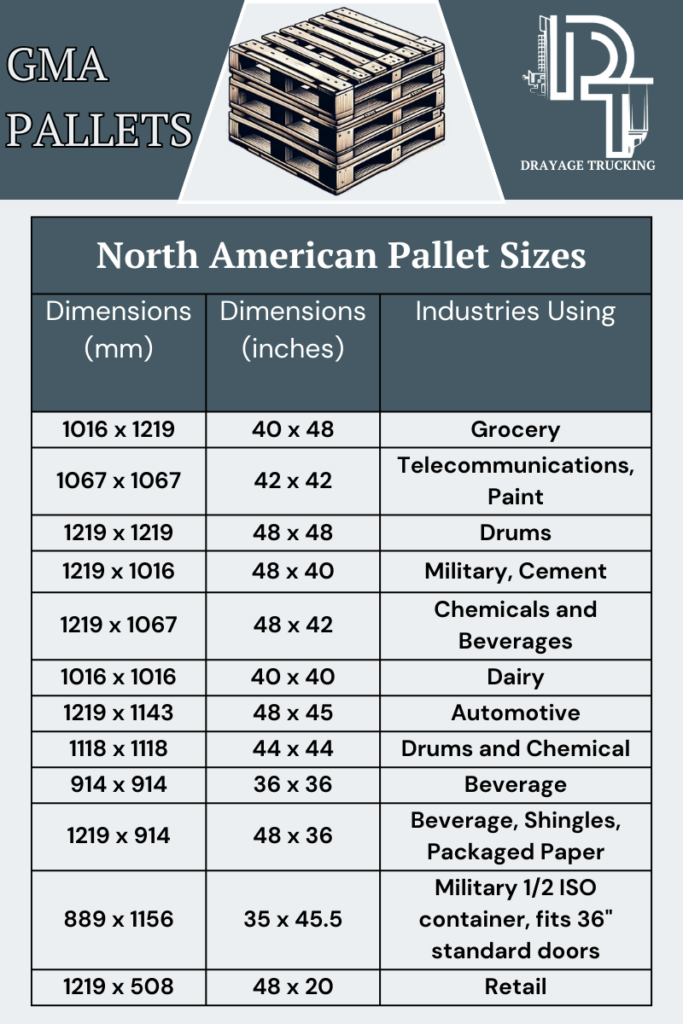What is the North American Pallet?
Are you in the logistics or warehousing industry in the US? Do you often deal with pallets for transporting or storing goods? If so, you probably know the importance of using standard size pallets. But what exactly are standard size pallets, and why are they so crucial?
In this guide, we’ll look at everything you need to know about standard North American pallets. We will cover their dimensions, materials, weight capacity, and much more.
Standard Sizes
These pallets usually measure 48″ x 40″, a size that’s become a standard across the industry. This size fits perfectly with North American transportation and storage systems, maximizing space and efficiency. They help streamline operations from coast to coast, reducing handling times and increasing warehouse organization.

Types and Materials
Pallets can be classified into two main types: block and stringer. Block pallets are generally stronger and more durable, allowing forklift access from all sides, while stringer pallets can only be accessed from two (or sometimes four) sides. Each has its advantages, depending on your specific needs.
- Softwood Pallets: The most budget-friendly choice, these pallets often meet a single-use fate before disposal.
- Plastic Pallets: A step up in price from wood, their strength and longevity justify the investment.
- Hardwood Pallets: Offering superior durability over softwood, these pallets are designed for repeated use, reflected in their higher cost.
- Paper Pallets: Known for their eco-friendly credentials, these pallets, also called eco-pallets, present a green shipping solution.
- Metal Pallets: At the pinnacle of strength and lifespan, their premium cost matches their unparalleled durability.
Weight Capacity and Load Types
The weight a standard size pallet can hold varies based on its material and construction, typically ranging from 1,000 to 4,500 pounds. Choosing the right pallet for your load type—not just in terms of weight but also considering the size and shape of the goods—is crucial for safety and efficiency.
Other Pallet Types
ISO Pallets: Known for their international standardization, ISO pallets are designed to meet global shipping requirements. They come in several sizes, facilitating worldwide logistics operations with ease. ISO pallets ensure compatibility across different countries and continents, making them indispensable for exporters and international shippers. Learn more about the versatility and specifications of ISO pallets in our detailed guide.
Euro Pallets (EPAL): Euro pallets are the standard bearer in Europe, recognized for their durability and efficiency. With a standardized size of 1200mm x 800mm, they fit perfectly into European transportation and warehousing systems. Euro pallets are not just about uniformity; they represent a commitment to quality and sustainability within the European logistics network. Discover the advantages and uses of Euro pallets in our comprehensive overview.

